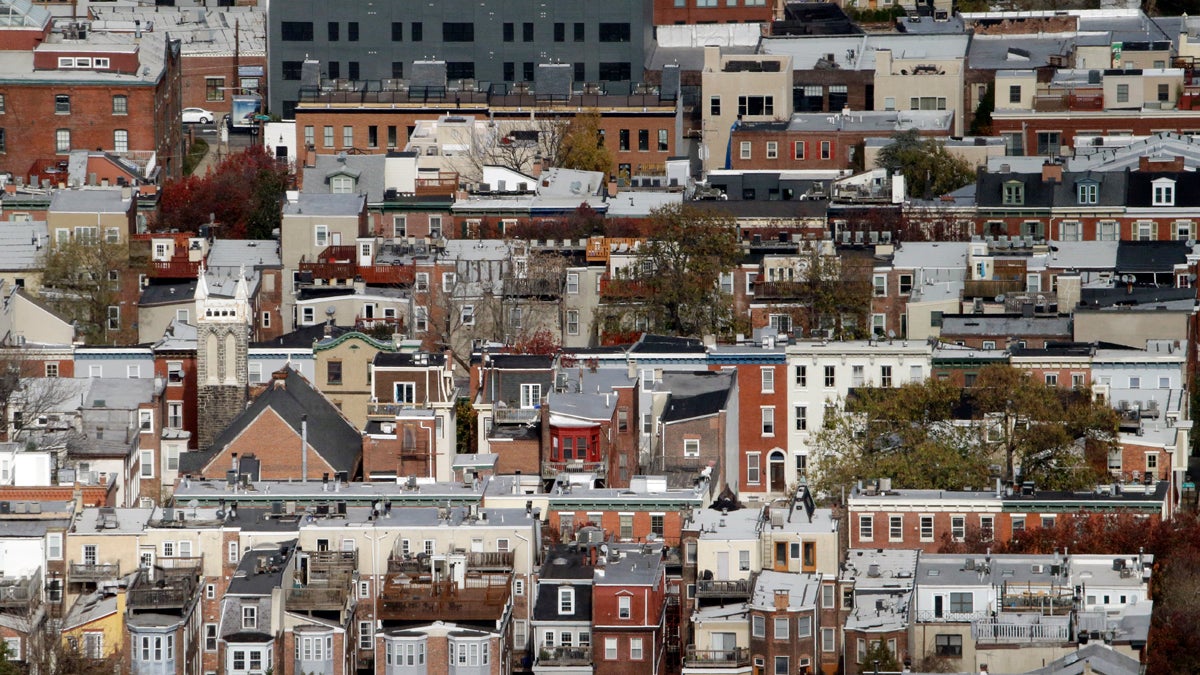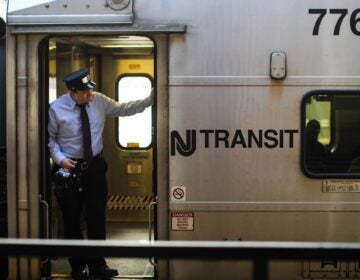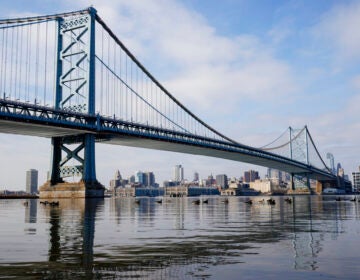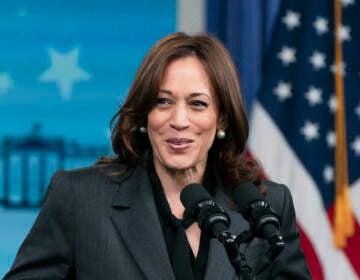From empty lots to affordable homes, Clarke plan aims to balance opportunity in Philly

City Council President Darrell Clarke addresses the concerns of Francisville residents who fear they will be priced out of their neighborhoods by developers. The City of Philadelphia and the Philadelphia Redevelopment Authority (PRA) on Monday announced the arrival of the groundbreaking phase of a plan to create 1,000 new units of “workforce housing,” or housing affordable to middle-income individuals and families. (Emma Lee/WHYY)
Milton Sloan has lived in Francisville in North Philadelphia for nearly four decades, and he’s ready for more affordable housing.
“They’re building houses like that with a sundeck on top and it’s not right,” he said, pointing to a skinny condo building sandwiched between older housing stock.
“We need more low-income housing in the community, instead of building these new houses,” said Sloan, who lives in public housing and pays about $550 a month. Even that, he said, is sometimes a struggle to meet.
City Council President Darrell Clarke is sympathetic to Sloan’s position.
On Monday, Clarke stopped by a groundbreaking event in Francisville, just south of Girard Avenue, as part of his ambitious plan to launch 2,000 affordable housing units on long vacant city-owned land.
Clarke is targeting residents wedged in an underserved income bracket.
“A husband who’s a nurse and makes a decent amount of money, and a wife who might be a manager of a Rite-Aid, maybe they make $65,000 together,” Clarke said.
“They can’t afford a market-rate house, but they also don’t qualify for public housing, as evidenced by the federal guidelines,” he said. “They need to be in a position where they can buy a product in the city of Philadelphia, and that’s the price-point that we want to address.”
Estimates from the Philadelphia Land Bank, an entity created to hasten the development of derelict lots, put the number of vacant, tax-delinquent properties in the city at more than 30,000. That number hasn’t changed much in the past decade.
“Part of the city’s fiscal problem, generally, is the inability for us over the years to grow the revenue base,” Clarke said. “If you put 20,000, 30,000 vacant properties that are not producing a dime in revenue back on the tax rolls, that obviously creates a better fiscal environment for us.”
In Francisville, builders will soon start construction on 32 units scattered around Parrish, 15th, and Burns streets.
The 2,000 affordable housing units Clarke has been hailing for a year will include apartment and dwellings to own, like the Francisville ones.
Under Clarke’s plan, the city gives a private developer a piece of vacant public land for a nominal fee — $1 — under an agreement that requires the developer to build units that are between 80 and 120 percent of the area’s median income.
In Francisville, that means the maximum price for each home, for a family of two, would be $180,000. The homes can fetch up to $259,000 for a family of five. And those below-market-rate prices have to be maintained for 10 years, according to the agreement.
Besides Francisville, the Philadelphia Redevelopment Authority is working on affordable housing projects on vacant land in Point Breeze, Grays Ferry and East Poplar. All the areas fall in what have been dubbed “opportunity zones,” as part of Clarke’s initiative.
“We believe not only with the people in the houses paying property taxes by a family there, spending in that neighborhood, stimulates additional growth revenue to the city, thereby allowing us to reduce the burden on other people through the city of Philadelphia,” Clarke said after the Monday event.
Part of Clarke’s original plan announced March of last year called for borrowing $100 million to subsidize the affordable rental units. The idea was to dedicate $100,000 for each of the 1,000 new rentals to keep them affordable over the next thirty years. That money was expected to come from issuing bonds. Now, however, Clarke’s team is stepping back from the bond plan.
“The city will not have to borrow to fund this program,” Jane Roh, Clake’s spokesman said. “After discussing the initial plan with stakeholders, including developers, Council President Clarke’s staff concluded the value of the land itself was sufficient incentive to make this work.”
In other words, Roh argues that the $100 million subsidy isn’t needed to keep the monthly rent of 1,000 units affordable. Just giving developers land for virtually nothing will keep rents down.
To be sure, Roh said developers have yet to to secure key federal tax credits to make developing those affordable apartments on empty lots more feasible. Meanwhile, the focus is on building relatively inexpensive single-family homes.
The new units, Clarke hopes, will provide more options in neighborhoods where low-priced housing is scarce, though empty, underdeveloped land is plentiful.
“There’s not going to be a shortage of vacant lots,” Clarke said. “As long as we approach this in a very aggressive way, creating a balanced opportunity, I think we’ll be in a position where we’ll be able to move forward and not have people be concerned about gentrification to the point where they get rolled out of their neighborhoods.”
WHYY is your source for fact-based, in-depth journalism and information. As a nonprofit organization, we rely on financial support from readers like you. Please give today.




